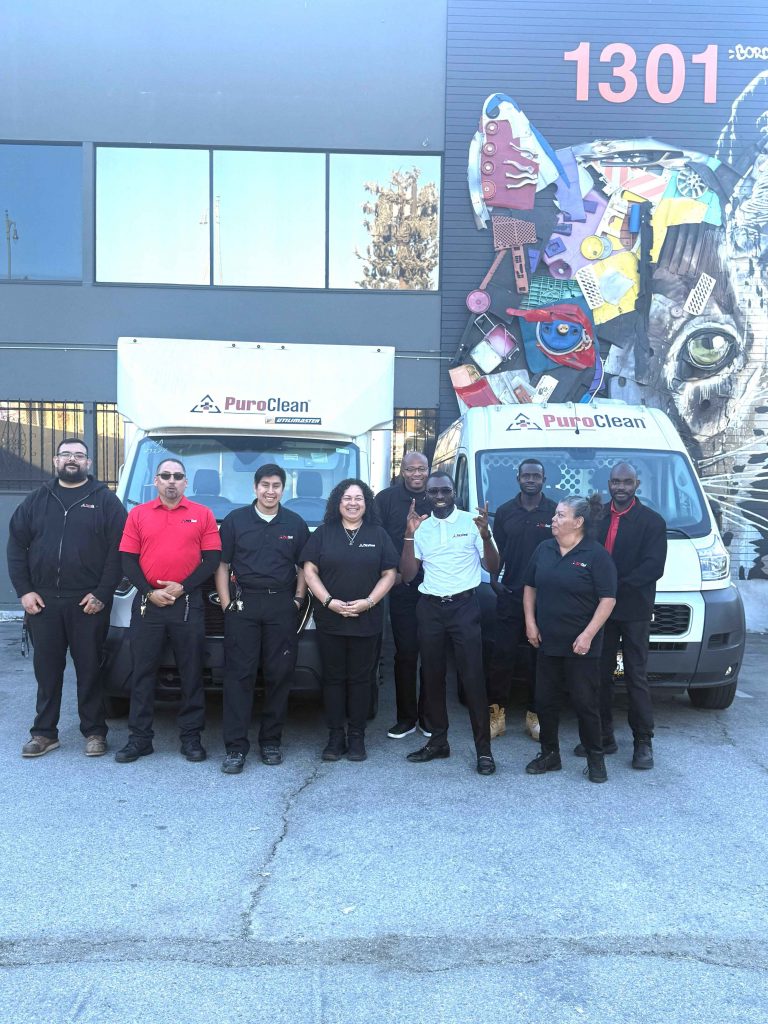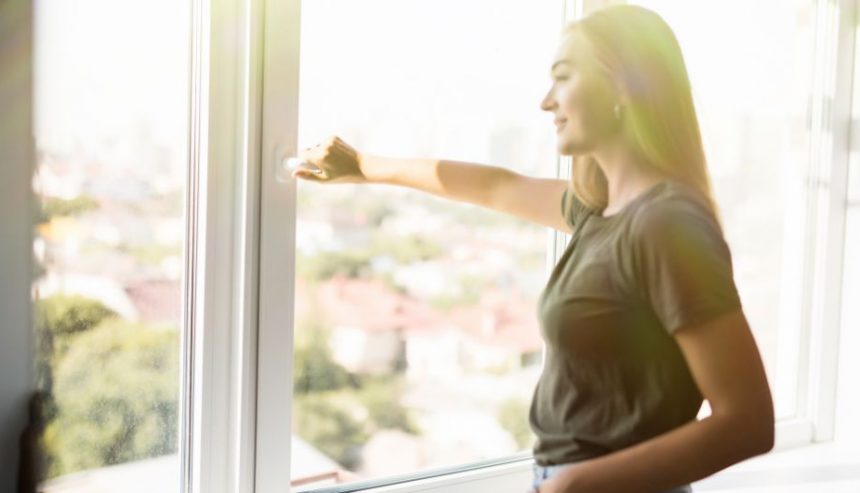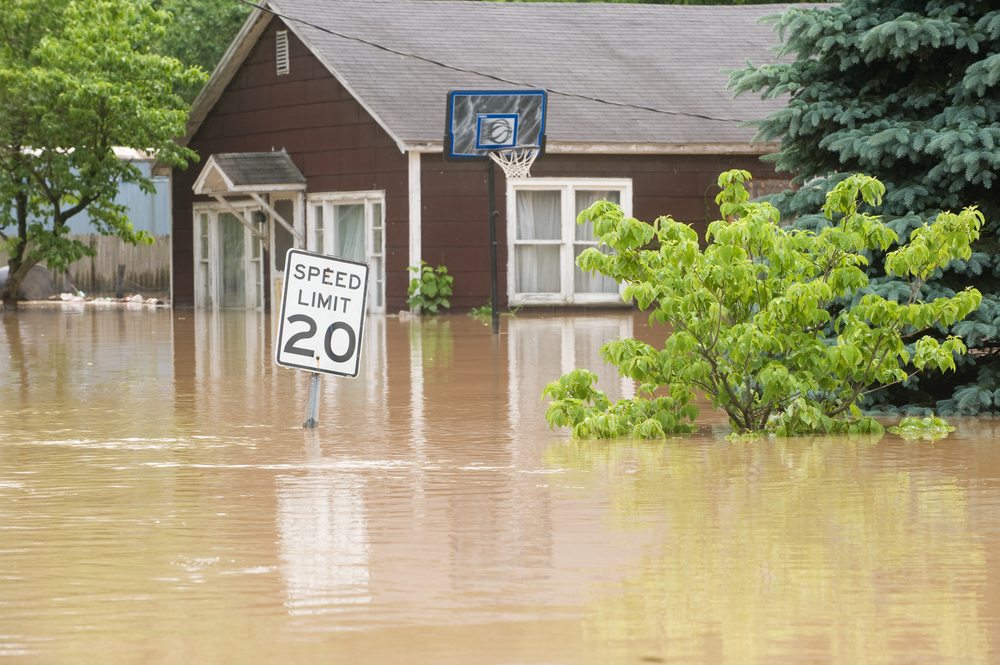You pride yourself on a clean home – spotless surfaces, vacuumed floors, and a fresh scent that greets you at the door. But what about the air you breathe every single day, within those very walls? In Victor Heights, a neighborhood rich in history, diverse architecture, and vibrant urban energy, the air inside our homes faces unique challenges that a dust cloth, air freshener, or even a typical vacuum cleaner simply can’t tackle.
At PuroClean of Victor Heights, we’re known as the “Paramedics of Property.” We respond to emergencies, clean up the visible aftermath of disasters, and restore properties to their pre-damage state. But our commitment goes far beyond the surface. We understand that a truly restored home isn’t just visually clean; it’s also a place where the air you breathe is healthy, fresh, and free from unseen contaminants. We’re here to ensure that the air in your Victor Heights home is not just clean, but truly healthy.
Read Also: Victor Heights Homeowner’s Lifeline: A Detailed Guide to Immediate Actions Following a Pipe Burst In Your Home
This post will delve into the often-overlooked world of indoor air quality. We’ll explore the common, invisible threats lurking in our homes, discuss why standard cleaning methods fall short, and reveal how PuroClean’s advanced restoration techniques provide a level of clean that ensures your indoor environment is genuinely safe and restorative.
The Air You Breathe: Common Sources of Indoor Air Pollution in Victor Heights Homes
While the bustling streets and scenic hills of Victor Heights offer much to love, they also contribute to the unique blend of indoor air challenges faced by local homeowners. Understanding these hidden sources is the first step toward creating a healthier living space.
Particulate Matter (PM2.5, PM10): The Invisible Dust Cloud
Imagine dust – but much, much smaller, often invisible to the naked eye. That’s particulate matter. These microscopic particles are a pervasive concern in urban environments like Los Angeles and, by extension, Victor Heights.
- Outdoor Contributions: Proximity to freeways (like the 110 or 101), ongoing construction projects downtown or in neighboring areas, and general urban activity constantly introduce fine particulate matter into our atmosphere. These tiny particles can easily infiltrate homes through open windows, cracks, and ventilation systems.
- Indoor Generators: Inside, activities like cooking (especially frying or grilling), burning candles or incense, using fireplaces, and even just walking around can stir up and generate these particles. Common allergens such as pollen (from LA’s diverse flora), pet dander, and dust mites also fall into this category.
- Impact on Health: When inhaled, these minuscule particles can bypass the body’s natural defenses, embedding themselves deep within the lungs. This can lead to respiratory issues, exacerbate asthma and allergies, contribute to cardiovascular problems, and even reduce lung function over time.
Volatile Organic Compounds (VOCs): The Chemical Cocktails
You know that “new car smell” or the scent of fresh paint? Those are often VOCs at work. These are gases emitted from certain solids or liquids and, unfortunately, many common household products and building materials are significant sources.
- Ubiquitous Sources: VOCs are found in paints, varnishes, sealants, adhesives, cleaning products, disinfectants, air fresheners, furniture, carpeting, and even some personal care products. The “off-gassing” process can continue for months or even years after these items are introduced into your home.
- Impact on Health: Exposure to VOCs can cause immediate symptoms like headaches, dizziness, nausea, and irritation of the eyes, nose, and throat. Long-term exposure to high levels can lead to more serious health effects, including damage to the liver, kidneys, and central nervous system, and some are known or suspected carcinogens.
- Victor Heights Niche: Older homes in Victor Heights might have layers of older paints or building materials that continue to off-gas. Simultaneously, modern renovations, common in a revitalizing area, can introduce a fresh batch of new VOCs if low-VOC alternatives aren’t chosen.
Biological Contaminants: The Living Invaders
These are living organisms or their byproducts that can thrive indoors, especially in damp conditions.
- Mold and Mildew: The most infamous biological contaminant. Mold spores are ubiquitous in the air, but they only grow when they find a suitable food source (like drywall, wood, fabric) and, critically, moisture. Leaky pipes, roof leaks, condensation, and even just high indoor humidity can create ideal breeding grounds. Victor Heights, with its mix of older homes and varying elevations, can be susceptible to hidden moisture issues.
- Bacteria and Viruses: While primarily spread person-to-person, indoor environments can harbor airborne bacteria and viruses, especially in poorly ventilated spaces.
- Pet Dander and Dust Mites: Common allergens that can trigger respiratory symptoms and allergic reactions.
- Impact on Health: Exposure to biological contaminants can lead to allergic reactions, asthma attacks, respiratory infections, skin irritation, and, in severe cases of mold exposure, more significant health issues.
Carbon Monoxide (CO) & Radon: The Silent Killers
These gases are particularly insidious because they are often odorless, colorless, and tasteless, making them impossible to detect without specialized equipment.
- Carbon Monoxide (CO): Produced by the incomplete combustion of fuels. Sources include faulty furnaces, gas stoves or water heaters, fireplaces, and vehicle exhaust from attached garages.
- Radon: A naturally occurring radioactive gas that seeps from the ground into homes. While less prevalent as a major concern in Los Angeles compared to some other regions, it’s always worth ensuring adequate ventilation, especially in basements or ground-level living spaces of older homes.
- Impact on Health: CO poisoning can cause headaches, dizziness, nausea, confusion, and can quickly lead to unconsciousness and death. Radon is a leading cause of lung cancer for non-smokers.
- Victor Heights Niche: Older heating systems, water heaters, or unvented gas appliances in historic Victor Heights homes could potentially pose a higher CO risk if not regularly inspected and maintained.
Read Also: Black Mold Insurance Claims – What You Need to Know in 2025
Post-Disaster Pollutants: The Lingering Aftermath
Even after the immediate cleanup of a disaster, unseen contaminants can linger, significantly impacting indoor air quality.
- Fire & Smoke Damage: Beyond visible soot, fires release microscopic soot particles, volatile organic compounds, and other toxic gases that become embedded in porous materials and spread throughout the HVAC system. The persistent “smoke odor” isn’t just unpleasant; it’s a sign of these embedded contaminants.
- Water Damage: Even clean water damage can quickly lead to mold growth within 24-48 hours if not thoroughly dried. Contaminated water (like sewage backups) introduces bacteria, viruses, and other pathogens that become airborne as moisture evaporates.
- Victor Heights Niche: Even seemingly small incidents – a kitchen fire, a minor plumbing leak, or a localized overflow – can leave behind significant, unseen air contaminants that impact your health long after the visible mess is gone.

The Limits of DIY Cleaning: Why “Clean” Isn’t Always “Healthy”
After a minor flood, a kitchen fire, or even just noticing a musty smell, your first instinct might be to grab a bucket and some cleaning supplies. While admirable, do-it-yourself cleaning, especially for significant incidents, simply isn’t equipped to handle the complexities of indoor air quality remediation. “Clean” to the naked eye often falls far short of “healthy” air.
Surface-Level vs. Deep-Seated Contaminants: The Invisible Barrier
Most DIY cleaning is surface-level. You wipe down counters, vacuum carpets, and mop floors. This removes visible dirt and dust. However, many of the most insidious indoor air pollutants – microscopic mold spores, ultra-fine smoke particles, and gaseous VOCs – are either too small to be seen or have already become embedded deep within porous materials like drywall, upholstery, carpeting, and even the structural elements of your home. A typical spray and wipe won’t reach them.
Inadequate Equipment: A Mop vs. a Mission
Your standard household vacuum, even with a HEPA filter, is designed for general household dust, not the fine particulate matter or biohazards present after a disaster. Without professional-grade air scrubbers, high-capacity dehumidifiers, specialized negative air machines, and industrial-strength cleaning agents, you’re essentially bringing a mop to a flood. These tools are engineered to capture microscopic particles, control airflow, and extract moisture from deep within materials.
Missing the Source: A Dangerous Cover-Up
DIY efforts often focus on treating symptoms rather than eliminating the root cause. For example, spraying air freshener might temporarily mask a musty odor, but it does nothing to stop the hidden mold growth behind a wall. Without the proper detection tools, like thermal cameras for moisture mapping or specialized air quality testing, you simply can’t identify all affected areas or completely remove the source of the contamination. This leaves pollutants actively degrading your indoor air long after you’ve “cleaned.”
Risk of Spreading Contaminants: The Unintended Consequence
Improper handling of contaminated materials can actually worsen the problem. Attempting to remove mold without proper containment, for example, can release millions of mold spores into the air, effectively contaminating previously unaffected areas of your home. Similarly, aggressive scrubbing of smoke-damaged walls without proper pre-treatment can embed soot and odor deeper into surfaces. Your efforts, though well-intentioned, could inadvertently spread the very problem you’re trying to fix, posing further risks to your family’s health.
Safety Concerns: Don’t Compromise Your Health
Dealing with mold, hazardous chemicals, or post-fire residue without proper personal protective equipment (PPE) like respirators, gloves, and eye protection is a serious health risk. Professional restoration teams are trained in hazardous material handling and are equipped to protect themselves and your property from further contamination. When you DIY, you risk direct exposure to allergens, carcinogens, and irritants.
PuroClean’s Advanced Approach: Ensuring Truly Healthy Indoor Air
At PuroClean of Victor Heights, our “Beyond the Cleanup” philosophy isn’t just a slogan; it’s a meticulous, multi-step process designed to restore not just the appearance of your home, but the very quality of the air you breathe. We act as the “Paramedics of Property,” using a scientific approach to address the unseen threats that linger after a disaster or simply due to the challenges of urban living.
1. Assessment and Identification: The First Crucial Step
Before any cleaning begins, our certified professionals conduct a thorough assessment. This goes far beyond what’s visible to the naked eye. We utilize:
- Moisture Meters and Thermal Cameras: To detect hidden moisture behind walls or under flooring, which could be a breeding ground for mold.
- Air Sampling and Particle Counters: To measure airborne mold spores, particulate matter, and other contaminants, giving us a clear picture of your indoor air quality.
- Comprehensive Inspection: Our experts identify the source and extent of contamination, whether it’s smoke residue, mold growth, or other pollutants.
This detailed assessment allows us to develop a tailored remediation plan, ensuring no hidden threats are left behind.
2. Source Removal & Containment: Stopping Pollution at its Root
Once identified, the source of contamination must be neutralized and removed safely.
- Containment Barriers: We establish physical barriers using plastic sheeting and negative air pressure to isolate the affected area. This prevents microscopic particles and contaminants from spreading to unaffected parts of your Victor Heights home during the restoration process.
- Physical Removal: Contaminated materials, such as moldy drywall, charred wood, or sewage-saturated carpets, are carefully and safely removed, bagged, and disposed of according to industry standards. Unlike DIY attempts that often just clean around the problem, we ensure the source is gone.
3. Air Filtration & Scrubbing: Clearing the Atmosphere
Even after source removal, microscopic particles remain suspended in the air. This is where our advanced air purification equipment comes into play:
- HEPA Air Scrubbers: These industrial-grade filtration units are designed to continuously cycle air through High-Efficiency Particulate Air (HEPA) filters, capturing 99.97% of airborne particles down to 0.3 microns. This includes mold spores, pet dander, dust mites, pollen, and even fine smoke particles.
- Negative Air Pressure Machines: These powerful units create a vacuum effect within the containment zone, forcing air through HEPA filters before exhausting it outside. This critical step ensures that any airborne contaminants stirred up during the cleaning process are safely captured and prevented from re-entering your living spaces.
4. Odor Neutralization & Deodorization: Beyond Air Fresheners
Masking odors with sprays is a temporary fix. PuroClean eliminates odors at their molecular source.
- Thermal Fogging: This technique disperses a fine, penetrating mist of odor-neutralizing agents that reach microscopic particles embedded in porous materials like fabrics, wood, and drywall. It’s like a deep, molecular clean for your entire home.
- Ozone and Hydroxyl Generators: In specific, controlled scenarios (and always in unoccupied spaces for ozone), we use these advanced machines to generate reactive molecules that chemically break down and neutralize odor-causing compounds at a molecular level, leaving no lingering scent. Hydroxyl generators are a safer alternative for occupied spaces, using UV light to achieve similar results.
5. Structural Drying & Moisture Control: The Foundation of Clean Air
For water-related incidents, thorough drying is paramount to preventing secondary damage like mold growth, which directly impacts air quality.
- Industrial Dehumidifiers: These powerful units extract vast amounts of moisture from the air, preventing humidity from creating a breeding ground for mold and mildew.
- High-Velocity Air Movers: Strategically placed to create targeted airflow, these machines accelerate the evaporation process, drying structural materials and contents quickly and efficiently.
- Monitoring and Verification: We continuously monitor moisture levels in affected materials to ensure they are dried to industry standards, guaranteeing that mold won’t become an issue weeks or months later. This is particularly crucial in older Victor Heights homes where hidden moisture can be a persistent problem.
6. Cleaning & Sanitization: The Final Polish
Our cleaning goes beyond just making things look good; it’s about decontamination.
- Specialized Cleaning Agents: We use professional-grade, targeted cleaning agents designed for specific contaminants – whether it’s soot sponges for delicate surfaces, anti-microbial solutions for biohazards, or specialized detergents for fire-damaged contents.
- Thorough Cleaning: Every surface, content item, and even your HVAC system receives meticulous attention. We clean, sanitize, and often deodorize items to ensure they are safe and healthy to bring back into your living environment.
Maintaining Healthy Indoor Air in Victor Heights: Beyond the Restoration
While professional restoration by PuroClean provides a reset for your indoor air quality, maintaining it is an ongoing process. Here are some proactive steps every Victor Heights homeowner can take:
- Ventilation is Key: Open windows and doors regularly when outdoor air quality permits to allow fresh air to circulate. Use exhaust fans in kitchens and bathrooms to vent moisture and cooking fumes outside.
- HVAC Maintenance: Change your HVAC filters every 1-3 months, especially if you have pets or allergies. Consider upgrading to higher MERV-rated filters for better particulate capture. Schedule annual professional HVAC inspections.
- Humidity Control: Aim for indoor humidity levels between 30-50%. Use dehumidifiers in damp areas like basements or crawl spaces to prevent mold growth.
- Mindful Product Choices: Opt for low-VOC (Volatile Organic Compound) paints, sealants, and cleaning products. Choose furniture made with natural materials.
- Regular Cleaning: Vacuum regularly with a vacuum cleaner equipped with a HEPA filter. Dust surfaces with a damp cloth to trap particles rather than just stirring them into the air.
- Pet Care: Bathe and groom pets regularly to reduce dander. Keep pet areas clean.
When to Call PuroClean (Even Without a Major Disaster)
You don’t always need a catastrophic event to warrant a call to PuroClean. Consider reaching out if you experience:
- Persistent Unexplained Odors: A musty smell, a lingering smoky odor, or any unusual smell that won’t go away could indicate hidden mold, smoke residue, or other contaminants.
- Visible Mold Growth: If you spot mold, don’t try to clean it yourself if it’s larger than a small patch.
- Post-Minor Incident: Even a small leak, a kitchen “puffback” from a faulty appliance, or a minor spill can lead to unseen issues that impact air quality.
- Health Concerns: If family members are experiencing new or worsening allergies, asthma symptoms, or unexplained respiratory issues indoors.
- Preparing an Older Home: Before moving into or after purchasing an older Victor Heights home, an indoor air quality assessment can provide peace of mind.
Why Choose PuroClean of Victor Heights: Your Local IAQ Partner

Choosing PuroClean of Victor Heights means choosing a team that understands the unique pulse of our community.
- Local Expertise: We are your neighbors. We understand the specific architecture of Victor Heights homes, the local climate’s impact on moisture, and the urban factors that influence indoor air quality.
- Certified Professionals: Our technicians are highly trained, IICRC-certified, and committed to continuous education in the latest restoration and indoor air quality remediation techniques.
- State-of-the-Art Equipment: We invest in the most advanced equipment, from industrial air scrubbers to precise moisture detection tools, ensuring the most effective and efficient service.
- Compassionate Service: We know that dealing with property damage or health concerns from poor air quality can be incredibly stressful. Our team provides empathetic, transparent, and responsive service every step of the way.
- Beyond Restoration: Our commitment extends beyond the physical cleanup. We prioritize your family’s health and well-being, ensuring that your home is not just repaired, but restored to a truly healthy living environment.
Conclusion: Breathe Easier in Your Victor Heights Home
Indoor air quality is a silent guardian of your family’s health, and in a vibrant, historic community like Victor Heights, it demands particular attention. While regular cleaning is essential, true air quality goes “Beyond the Cleanup,” requiring specialized knowledge, equipment, and techniques to tackle the invisible threats that can compromise your well-being.
Don’t let unseen pollutants compromise the comfort and health of your home. Prioritize your indoor air quality, and remember that when it comes to creating a truly healthy living space in Victor Heights, PuroClean is more than just a service provider – we are your trusted partner. Contact PuroClean of Victor Heights today for an assessment, and let us help you create a truly healthy haven, where every breath is clean, fresh, and safe.




 PuroClean of Victor Heights
PuroClean of Victor Heights